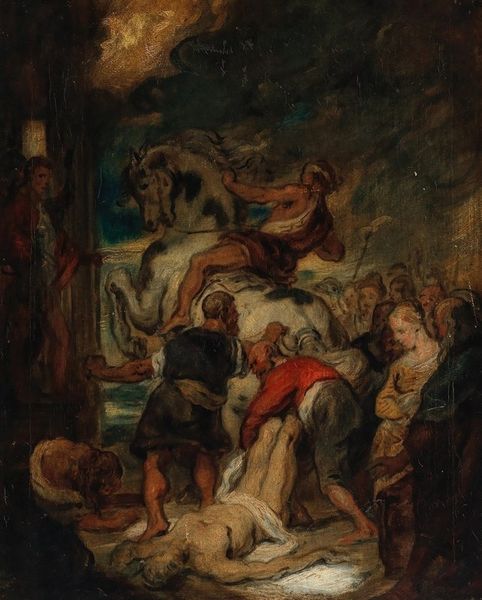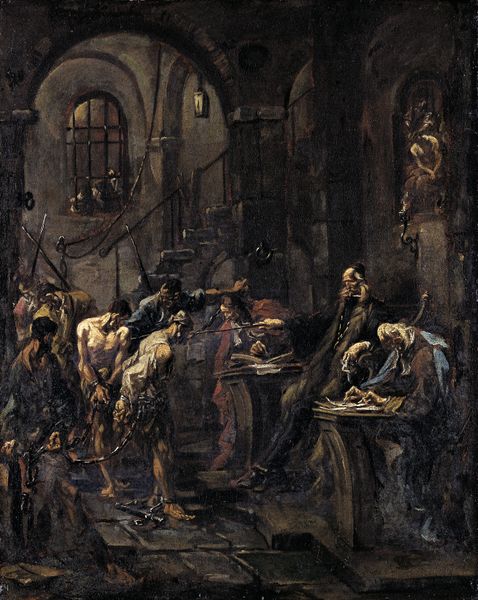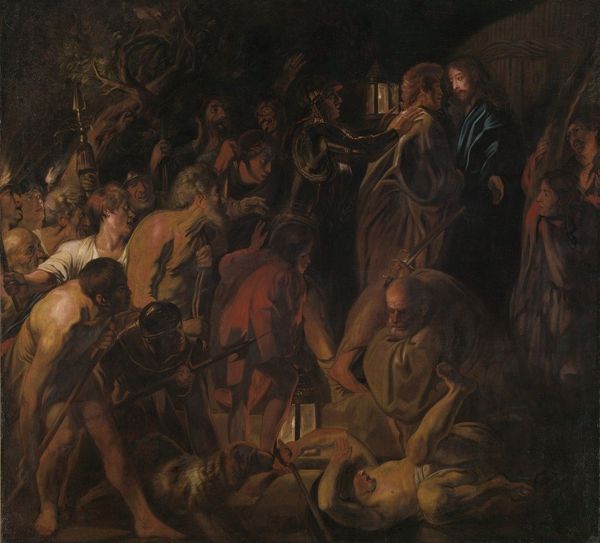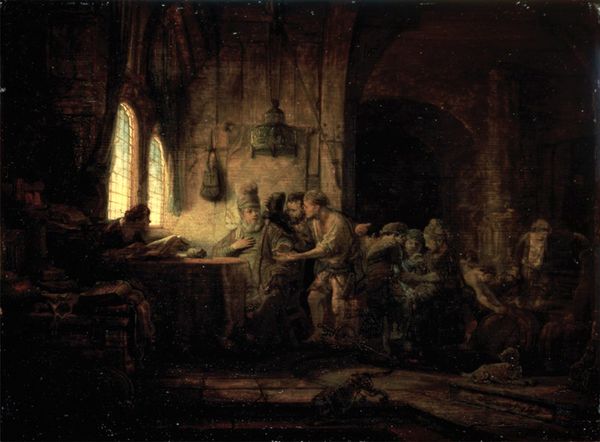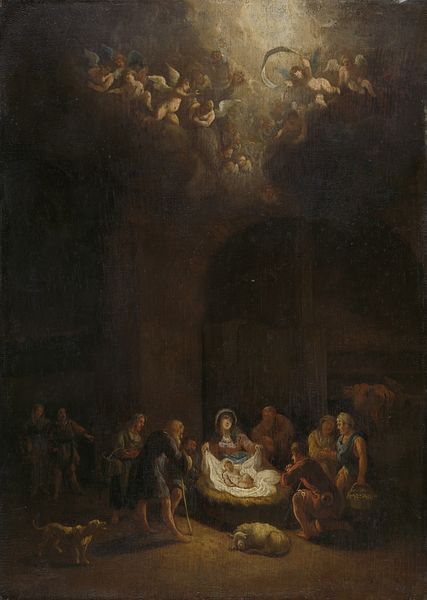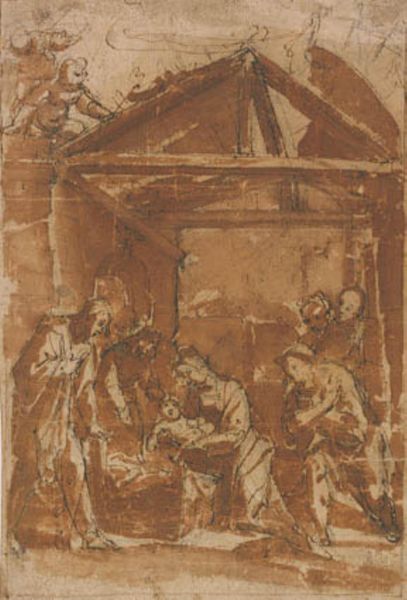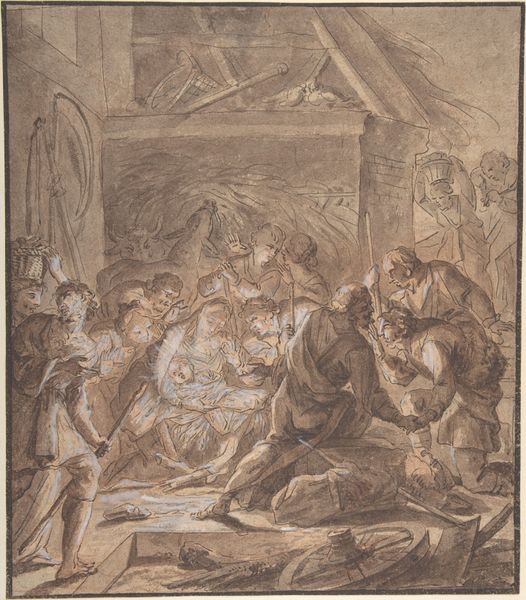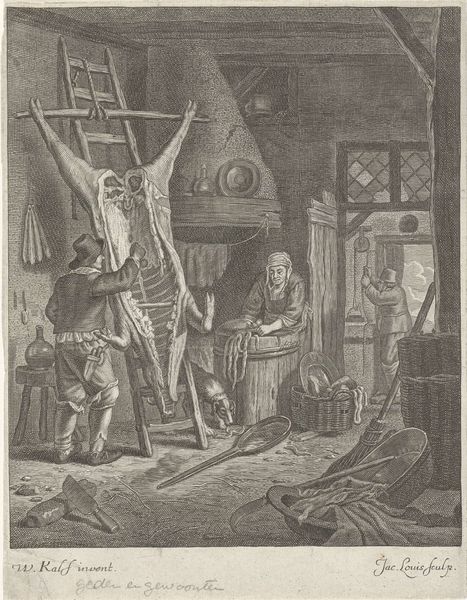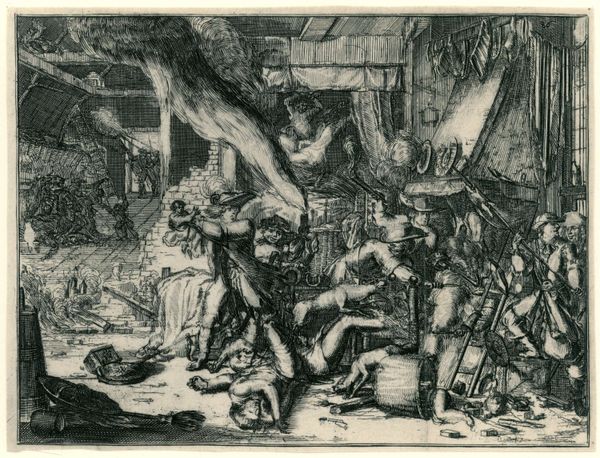
painting, oil-paint
#
narrative-art
#
baroque
#
painting
#
oil-paint
#
figuration
#
oil painting
#
genre-painting
#
history-painting
Dimensions: 73.2 x 58.2 cm
Copyright: Public Domain
Editor: Here we have Alessandro Magnasco's "Torture Scene," painted between 1727 and 1730 using oil on canvas. It certainly evokes a sense of the grim realities of power and justice in that period. What do you see in this work? Curator: The horror of the piece, so blatantly depicted, shouldn’t overshadow the context. Magnasco was working in a time of immense social stratification. What does it mean to portray such scenes so vividly, especially considering the elite patronage system of the time? Could it be read as a commentary on the brutal realities faced by the lower classes and othered communities? Editor: So, you're suggesting that Magnasco is using the scene to say something about social injustice. It's difficult to see past the shock value. The man hanging upside down… Curator: Exactly! Who is being tortured, and who is enacting the violence? Think about Foucault's ideas about power structures. How is power being visually performed here, and who is being systematically oppressed by the spectacle of punishment? The figures standing with pikes... do they remind you of other representations of state power? Editor: Yes, thinking about them in relation to, say, revolutionary imagery… So, rather than just a sensational depiction, this is a deliberate statement about the systems at play? Curator: Precisely. Art doesn’t exist in a vacuum. This “Torture Scene” prompts questions about who benefits from such cruelty, and about the relationship between art, power, and the oppressed. Magnasco is prompting a difficult dialogue. Editor: That really changes how I see it. The painting becomes a critical indictment rather than just a historical record. Curator: Understanding the socio-political currents of Magnasco's time allows us to unlock the true weight and urgency of his paintings, I'm glad to offer this understanding. Editor: Thanks, it provides such a vital new lens! I see so much more now!
Comments
No comments
Be the first to comment and join the conversation on the ultimate creative platform.
